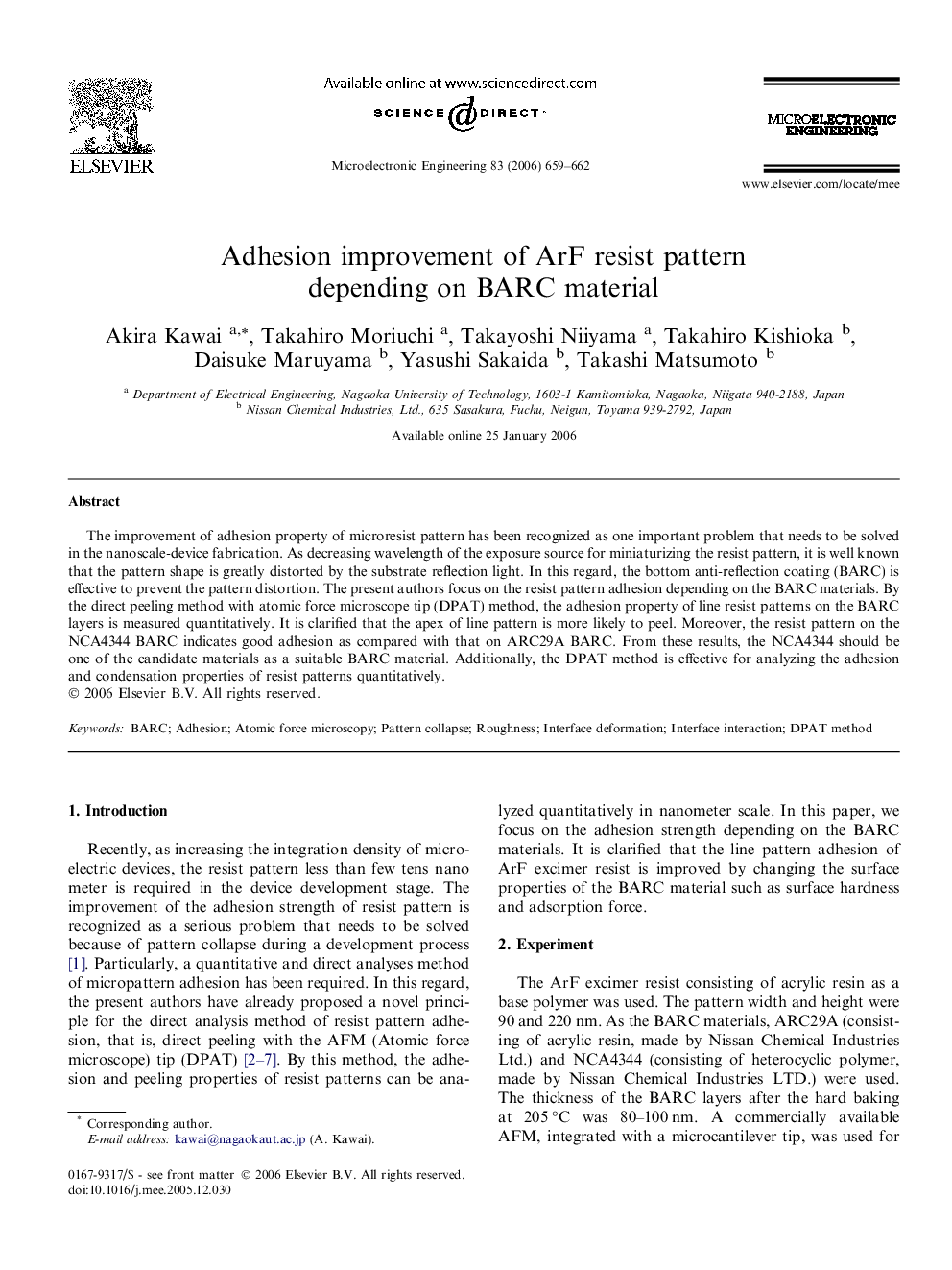| Article ID | Journal | Published Year | Pages | File Type |
|---|---|---|---|---|
| 540882 | Microelectronic Engineering | 2006 | 4 Pages |
The improvement of adhesion property of microresist pattern has been recognized as one important problem that needs to be solved in the nanoscale-device fabrication. As decreasing wavelength of the exposure source for miniaturizing the resist pattern, it is well known that the pattern shape is greatly distorted by the substrate reflection light. In this regard, the bottom anti-reflection coating (BARC) is effective to prevent the pattern distortion. The present authors focus on the resist pattern adhesion depending on the BARC materials. By the direct peeling method with atomic force microscope tip (DPAT) method, the adhesion property of line resist patterns on the BARC layers is measured quantitatively. It is clarified that the apex of line pattern is more likely to peel. Moreover, the resist pattern on the NCA4344 BARC indicates good adhesion as compared with that on ARC29A BARC. From these results, the NCA4344 should be one of the candidate materials as a suitable BARC material. Additionally, the DPAT method is effective for analyzing the adhesion and condensation properties of resist patterns quantitatively.
